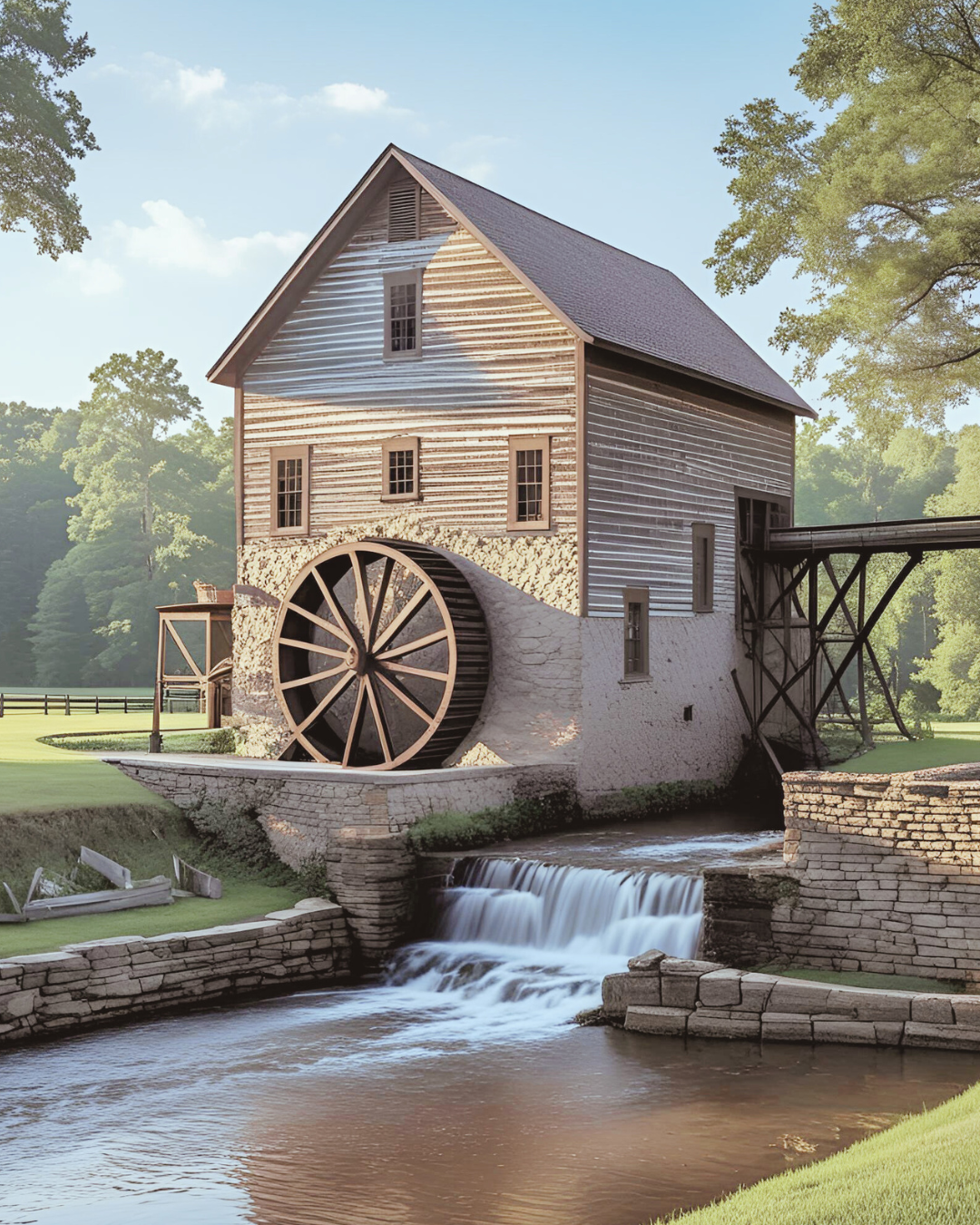The Mysterious Van Dyke Mill of Finchville, Kentucky
A Forgotten Landmark with a Lasting Legacy
Tucked into the rolling hills and river bends of Spencer County, Kentucky, the Van Dycke Mill once stood as a vital part of Taylorsville’s agricultural heartbeat.
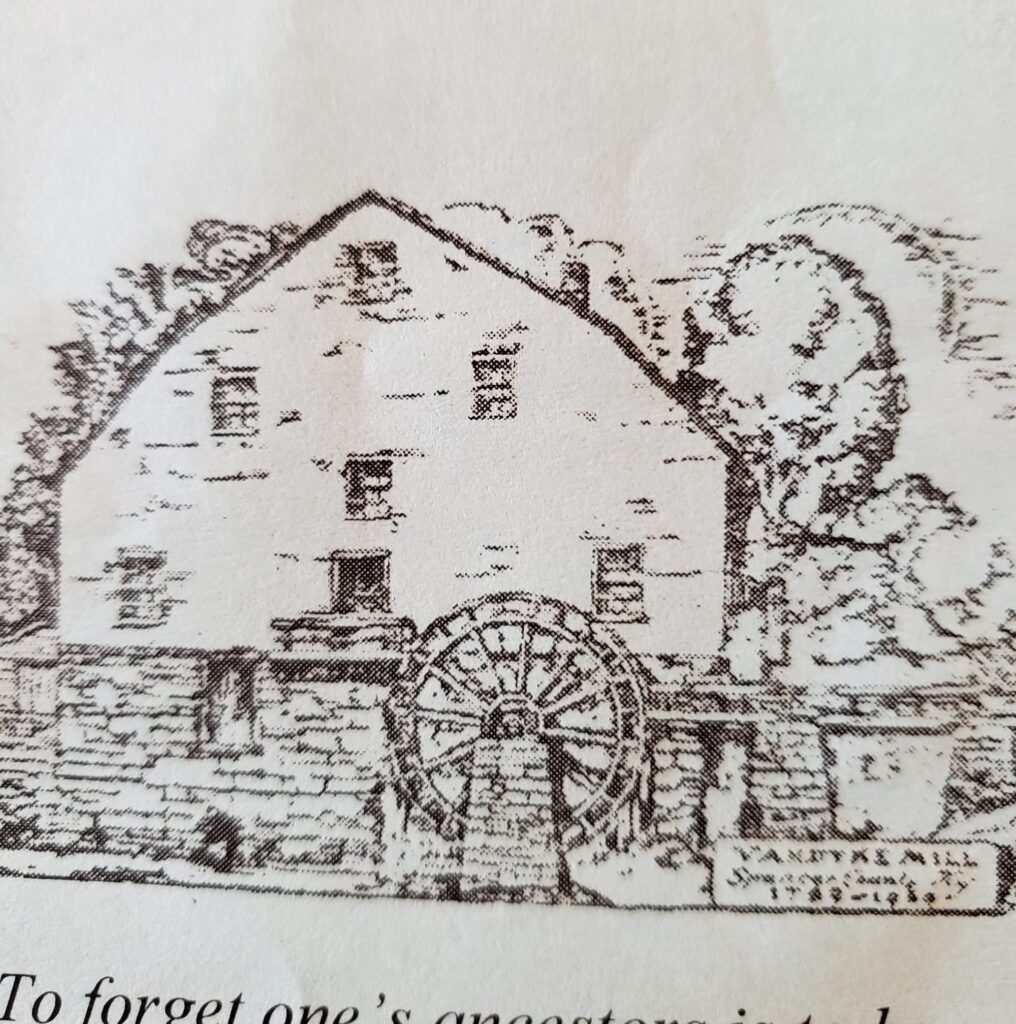
It was captured in pen and ink by Walter Kiser and one of his drawings serves as the logo for the Spencer County Historical Society.
Just imagine…
Nestled in a lush, green valley, the historic Van Dycke Mill stands proudly with its weathered wooden exterior, the "Van Dycke Mill" sign weathered but legible above the entrance. A large waterwheel turns steadily, powered by a clear stream that cascades over a small stone bridge, its gentle splash echoing through the serene landscape. Rolling hills stretch into the distance, framed by dense trees, while a wooden fence encloses the scene, dotted with barrels and a horse-drawn cart waiting patiently nearby. Farmers and women, their barrels and grain bags in tow, gather in small groups, socializing and sharing laughter as they await their turn to have their grain milled. Bathed in soft, warm sunlight, the mill exudes a timeless charm, whispering stories of a bygone era.Though the mill itself has vanished from the landscape, its name and legacy continue to echo through local lore and geography.
🕰️ A Glimpse into the Past
Established in the 19th century, the Van Dyke Mill—sometimes spelled Van Dycke—likely served as a grist mill, grinding grain for local farmers in a region deeply rooted in agriculture. Mills like this were essential to rural communities, acting as both economic engines and social gathering points.
Today, the mill’s memory lives on in Van Dyke Mill Road, a quiet rural lane that hints at the site’s former importance. Though the famous drawings of the mill live on, we wanted to reimagine what it may have looked like in its prime. We took the liberty of asking AI what the mill might have looked like and had some fun with the results…
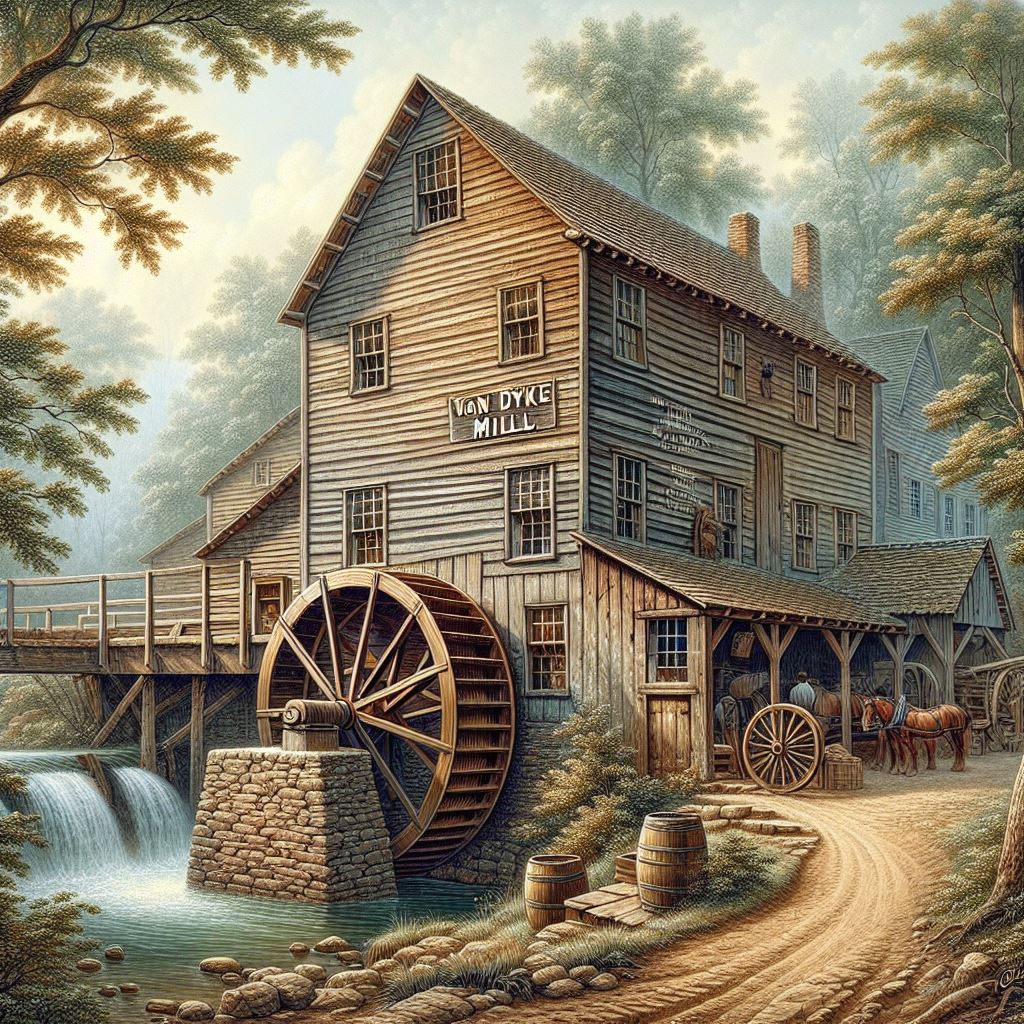
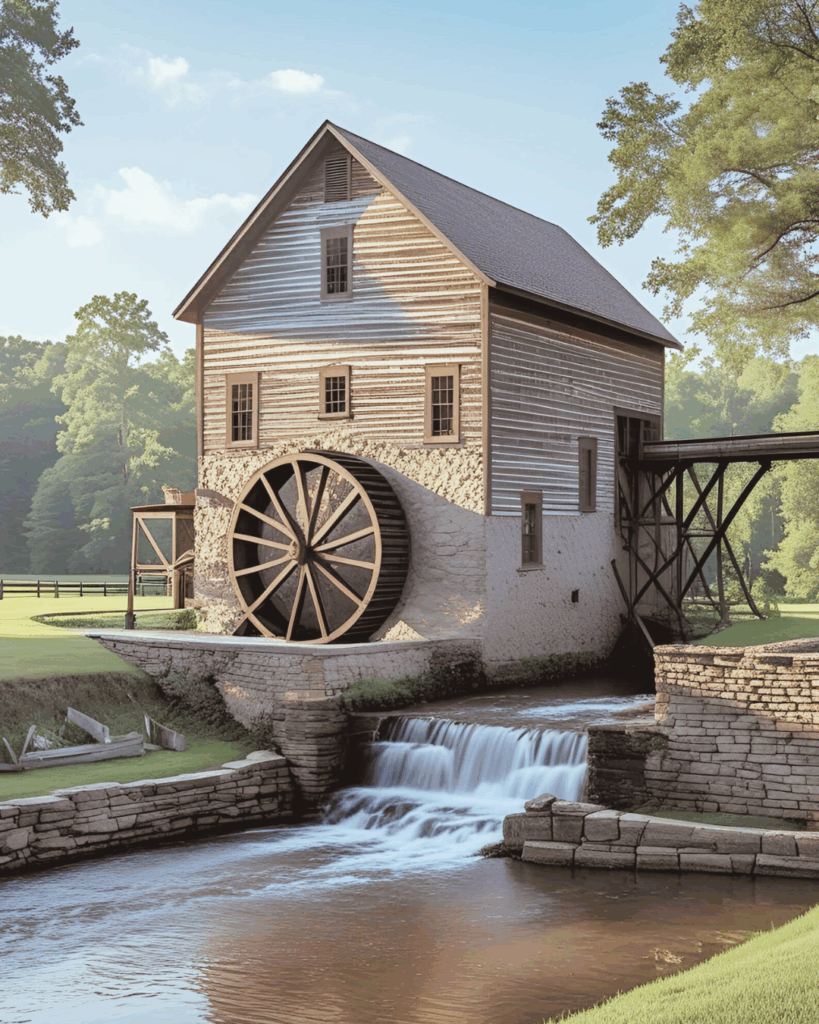
Odes to the Van Dyke Mill
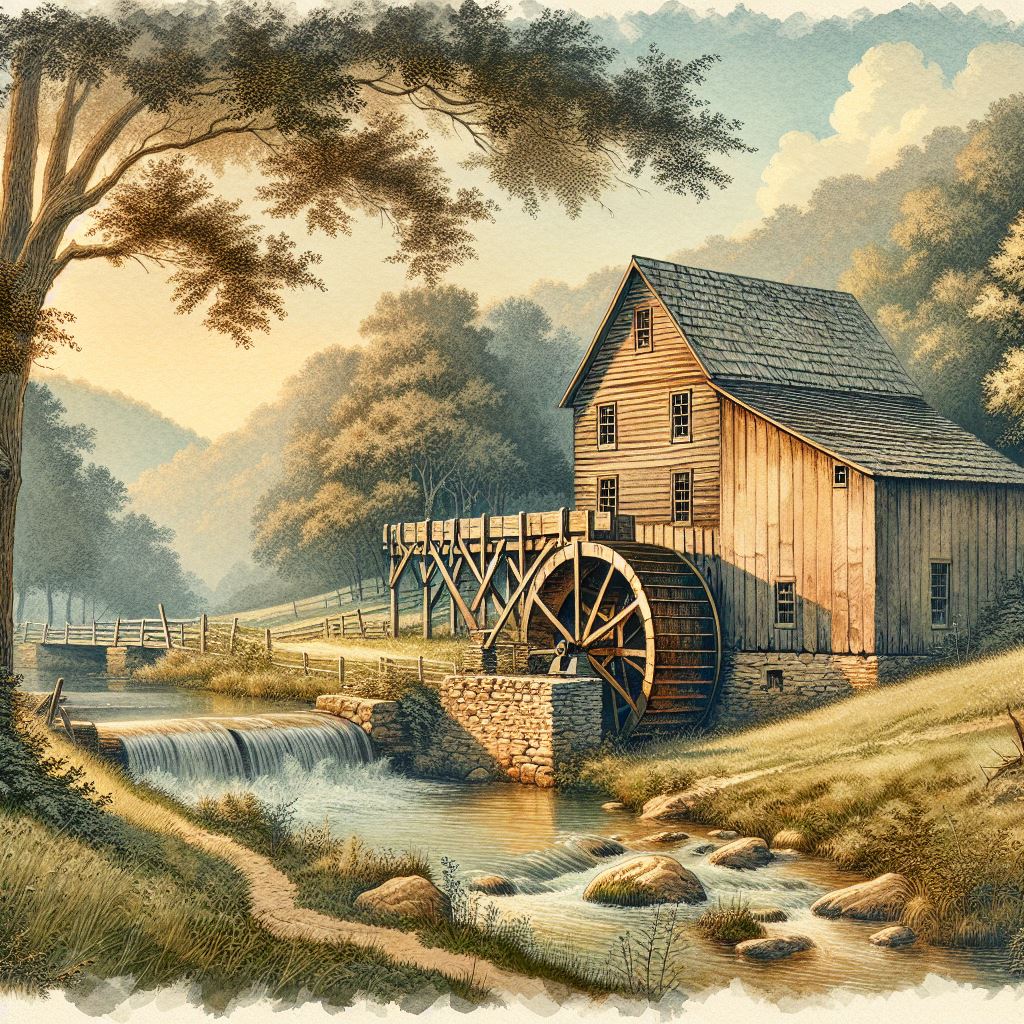
🔍 So What Happened to the Mill?
The exact fate of the Van Dyke Mill remains a mystery. The home of the Van Dyke family remains but how could such an important piece of history just disappear? Like many early mills, it may have succumbed to:
- Technological changes in milling
- Shifting trade routes and transportation patterns
- Recurring floods, which plagued the area until the construction of a flood wall in 1948
No physical structure remains, and few records detail its closure—making it a tantalizing subject for local historians and curious visitors alike. Rumor has it that its fabled mill-stone lives at another historic property in Spencer County.
🗂️ Preserving the Past
Fortunately, the story doesn’t end there. The Filson Historical Society has cataloged the Van Dyke Mill in its digital archives, offering a potential treasure trove of photographs, maps, and documents for those eager to learn more.
🔗 Explore the Filson Historical Society’s entry on Van Dyke Mill
🧭 Why It Matters
The Van Dyke Mill is more than a lost building—it’s a symbol of the county’s resilience and rural heritage. Preserving its story helps us understand the rhythms of life in 19th-century Kentucky and the forces that shaped small-town America.
Keep in touch for more history!

